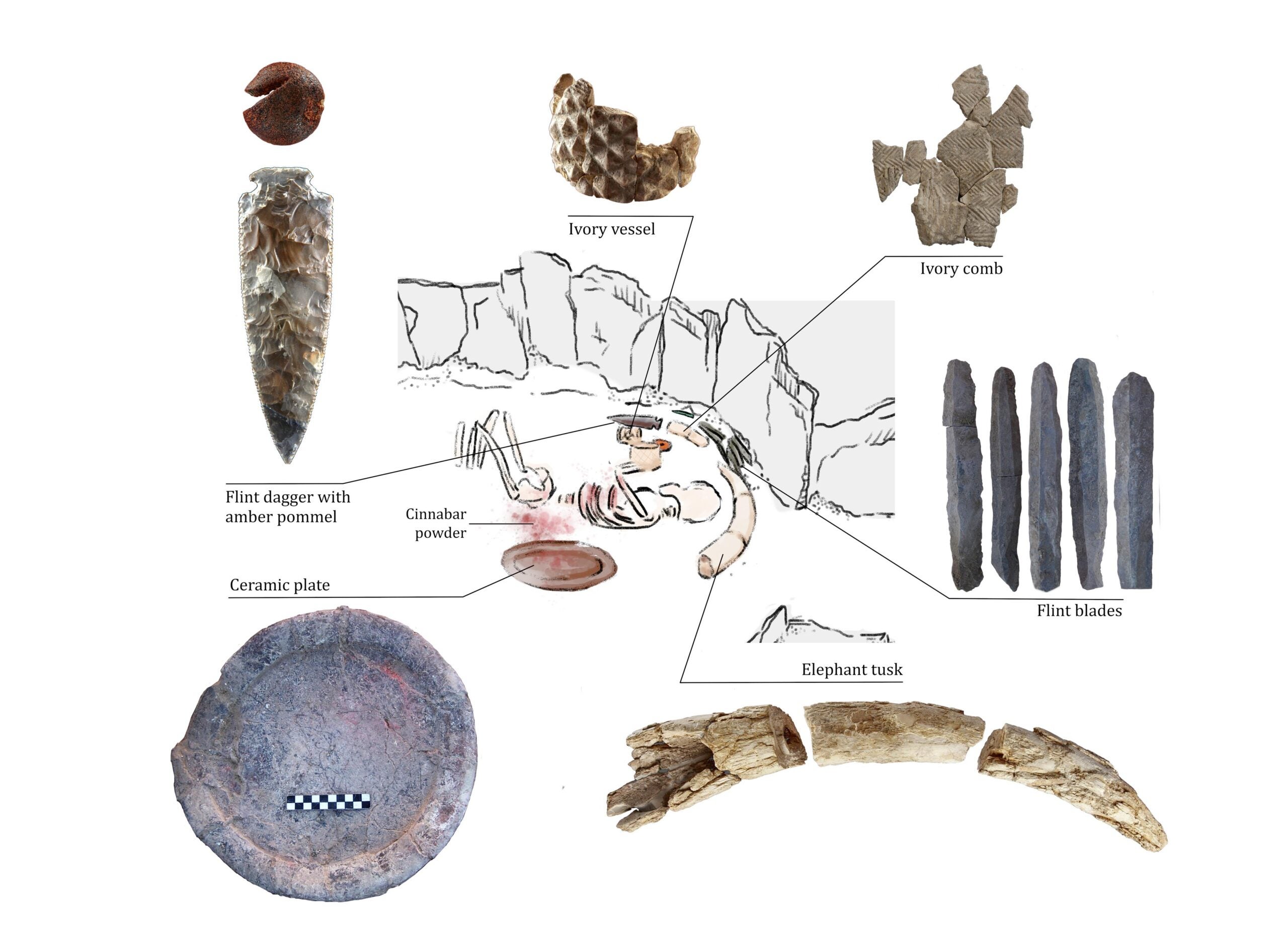Decoding the gender inequalities and misconceptions of the past is having a moment. In the past few weeks, studies have debunked the men as hunters women as gatherers myth, and we’re continuing to learn about the powerful people (and teens) that lived centuries ago.
The Copper Age, between 3,200 and 2,200 years ago, was known for the widespread use of copper, but also gendered burials. According to a new study published July 6 in the journal Scientific Reports, the highest status individual of a Copper Age society on the Iberian peninsula was actually a woman, and not a man as originally believed.
“This study was undertaken as part of a broader research looking at the interplay between early social complexity and gender inequalities,” study co-author and University of Seville prehistorian Leonardo García Sanjuán tells PopSci. “As part of this research, it became obvious that there is a serious problem in the identification of biological sex in prehistoric skeletons, which are often found in a poor state of preservation.”
Now redubbed the “Ivory Lady,” this woman’s tomb was first discovered in 2008 in Valencia on Spain’s southeastern coast. The find dates back to the Copper Age, when the metal was used for construction, agriculture, and even creating engravings of owls that may have been toys. The grave is also a rare example of single occupancy burial at the time and the tomb was filled with the largest collection of valuable and rare items in the region. These treasures include high-quality flint, ostrich eggshell amber, a rock crystal dagger, and ivory tusks.
All of these trinkets and single tomb initially indicated that the remains must belong to a prominent male, but peptides and DNA don’t lie.
In the study, the team used peptide analysis to test for the presence of a protein called amelogenin in the teeth of the specimen. This protein is on the AMELX gene in the X chromosome and on the AMELY gene on the Y chromosome, which males have. Analysis of a molar and an incisor detected the presence of the AMELX gene, indicating that the remains belonged to a female rather than a male.
 The main artifacts deposited around the body in the lower part of the tomb. CREDIT: Miriam Lucianez Trivino.
The main artifacts deposited around the body in the lower part of the tomb. CREDIT: Miriam Lucianez Trivino.
“When we compare the Ivory Lady with other Iberian Copper Age burials (and we did a systematic comparison based on a compilation of data for more than 2,000 burials) she stands out as the most prominent person ever to have lived in that period,” says García Sanjuán.
Additionally, due to the lack of grave goods in infant burials, it’s likely that individuals at this time were not granted high status by their birth rite. The team believes that the Ivory Lady made it to the top through her merit and achievements in life.
[Related: Lucy, our ancient human ancestor, was super buff.]
According to García Sanjuán, the remains of a similarly high status male have not been found. The only similarly lavish Copper Age tomb in the region contained at least 15 women and was found next to the Ivory Lady’s grave. This tomb is presumed to have been built by those who claimed to be her descendants, which suggests that women held positions of leadership in Iberian society during this time.
“In the ethnographic literature, the leaders of the pre-state societies are, in most cases, male individuals and concepts such as ‘big man’, ‘chiefdoms’ or ‘aggrandizers’ are used to describe these societies. Our study shows that this was not necessarily the case in prehistory,” says García Sanjuán. “In our view, this implies that we need not only to rethink what has been said for Copper Age Iberia, but for the processes that led to social complexity worldwide.”
This study was part of the broader project WOMAM: Women, Men and Mobility, Understanding Gender Inequality Through Prehistory which is funded by the European Commission.

>>> Read full article>>>
Copyright for syndicated content belongs to the linked Source : Popular Science – https://www.popsci.com/science/copper-age-ivory-lady-tomb/

















![[News] Japan Develops 10nm Nanoimprint Technology, with Potential to Tackle EUV Bottleneck – TrendForce](https://earth-news.info/wp-content/uploads/2025/12/329851-news-japan-develops-10nm-nanoimprint-technology-with-potential-to-tackle-euv-bottleneck-trendforce-360x180.jpg)













